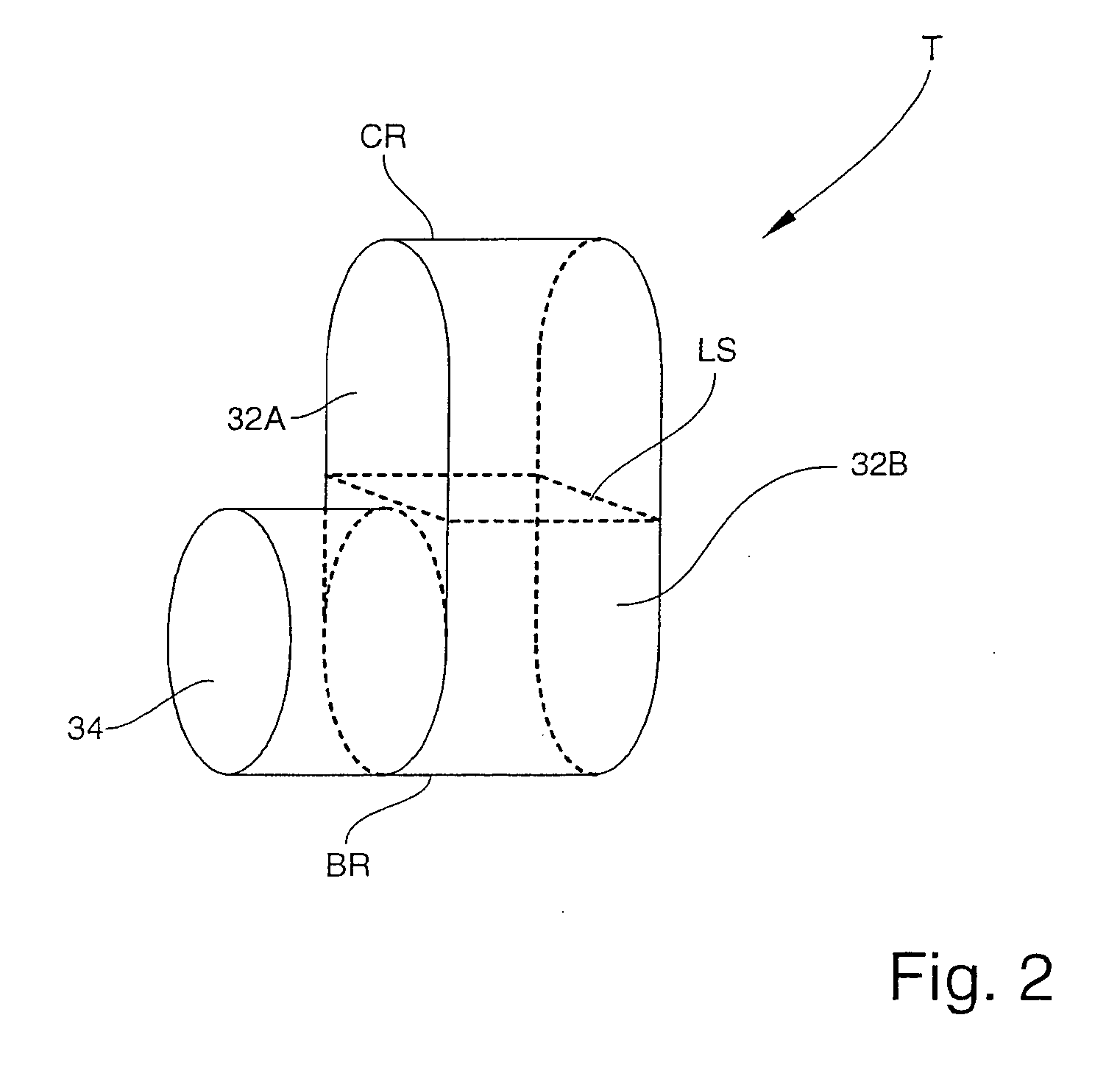Batch target and method for producing radionuclide
a radionuclide and target technology, applied in the field of radionuclide production, can solve the problems of limiting the amount of radioactive products that can be produced, the full production potential of the accelerator is not realized, and the operation of the cyclotron represents about 20% of the cost of the pet scan
- Summary
- Abstract
- Description
- Claims
- Application Information
AI Technical Summary
Benefits of technology
Problems solved by technology
Method used
Image
Examples
Embodiment Construction
[0017] As used herein, the term “target material” means any suitable material with which a target fluid can be enriched to enable transport of the target material, and which, when irritated by a particle beam, reacts to produce a desired radionuclide. One non-limiting example of a target material is 18O(oxygen-18 or O-18), which can be carried in a target fluid such as water (H218O). When O-18 is irradiated by a suitable particle beam such as proton beam, O-18 reacts to produce the radionuclide 18F (fluorine-18 or F-18) according to the nuclear reaction O-18(P,N)F-18 or, in equivalent notation, 18O(p,n)18F.
[0018] As used herein, the term “target fluid” generally means any suitable flowable medium that can be enriched by, or otherwise be capable of transporting, a target material or a radionuclide. One non-limiting example of a target fluid is water.
[0019] As used herein, the term “fluid” generally means any flowable medium such as liquid, gas, vapor, supercritical fluid, or combin...
PUM
 Login to View More
Login to View More Abstract
Description
Claims
Application Information
 Login to View More
Login to View More - R&D
- Intellectual Property
- Life Sciences
- Materials
- Tech Scout
- Unparalleled Data Quality
- Higher Quality Content
- 60% Fewer Hallucinations
Browse by: Latest US Patents, China's latest patents, Technical Efficacy Thesaurus, Application Domain, Technology Topic, Popular Technical Reports.
© 2025 PatSnap. All rights reserved.Legal|Privacy policy|Modern Slavery Act Transparency Statement|Sitemap|About US| Contact US: help@patsnap.com



